“Minimum Viable Product” (MVP) has become a bit of a dirty word in product development - often associated with a product that emphasises the “minimal” more than the “viable”. This is a shame because the MVP is an important and useful concept. The core of the idea is a good one; an MVP is the product you can build the fastest and with the least investment that is still “viable” and can show some traction in the market.
In our blog about the stages of a product journey we talk about getting from the opportunity stage to Product / Solution Fit - that is, you have a good sense of the user problem you are solving and how you will solve it. This stage often leads to an MVP - a product you put in the market for testing. If you don’t define your MVP well, you can release something that either doesn’t solve the problem at all, or something that is bloated with unnecessary features and gets released too late to capture an emerging opportunity.
In this blog I’m going to try to reclaim the MVP and show how a carefully thought out breakdown of your addressable market can help you prioritise well, get your product to market earlier and grow faster.
A good MVP will:
- Solve a problem for a group of users well (desirable)
- Be something that your business is well positioned to deliver and grow (viable)
- Be something you can build quickly, learn from and scale (feasible)
Build a good persona model
A good persona model should aid your decision making and prioritisation. It should be built through the most robust research you can afford, as building digital products can be expensive and each bad prioritisation decision carries considerable cost. A good persona model is expensive to make, but not as expensive as losing an opportunity in the market to a competitor.
Each persona needs a few key ingredients:
- Problem(s) to solve - These can be expressed in a few ways: pain points, jobs to be done, needs and wants. They should point to a problem set that can be solved with a digital product.
- Attitudes and behaviours - Describing how your users think and behave when interacting with your product allows you to make prioritisation decisions, because you have a way of understanding what your users will find valuable.
- A way to reach the user group - In most cases, this will be demographic proxies that can be used to target these users with ads, although established companies might be able to leverage their existing channels too.
Persona models that don’t contain these ingredients can’t be used for successful prioritisation. If the persona is just demographic information, it won’t tell you anything about how to prioritise your effort, and if it is just problems to solve or attitudes and behaviours, you will struggle to find and connect with your audience.
If you have a large addressable market, you might find that the first version of your persona model has personas which are still too broad. If this happens, you can introduce sub-personas or an extra dimension you can use to divide up your users. This can be especially useful if you have a large user base, and can help you arrive at discrete groups of users with homogenous needs, attitudes and behaviours.
On a recent ustwo project for a large multinational bank, we were working with a large addressable market - all small to medium sized businesses in the UK. We built out a persona model mainly based on an experience curve, ranging from new business owners who were just starting out to established business owners who were either happy with their lot or wanted to grow.
This helped us with our initial prioritisation and decision making, but we were still finding a lot of variation within these user groups. Most of this variation came from the considerable variety of business types we were working with - from shops selling FMCG to marketing agencies with a small client list on long retainers. It was only when we introduced an extra dimension - business type - that we found we were working with discrete, homogenous groups.
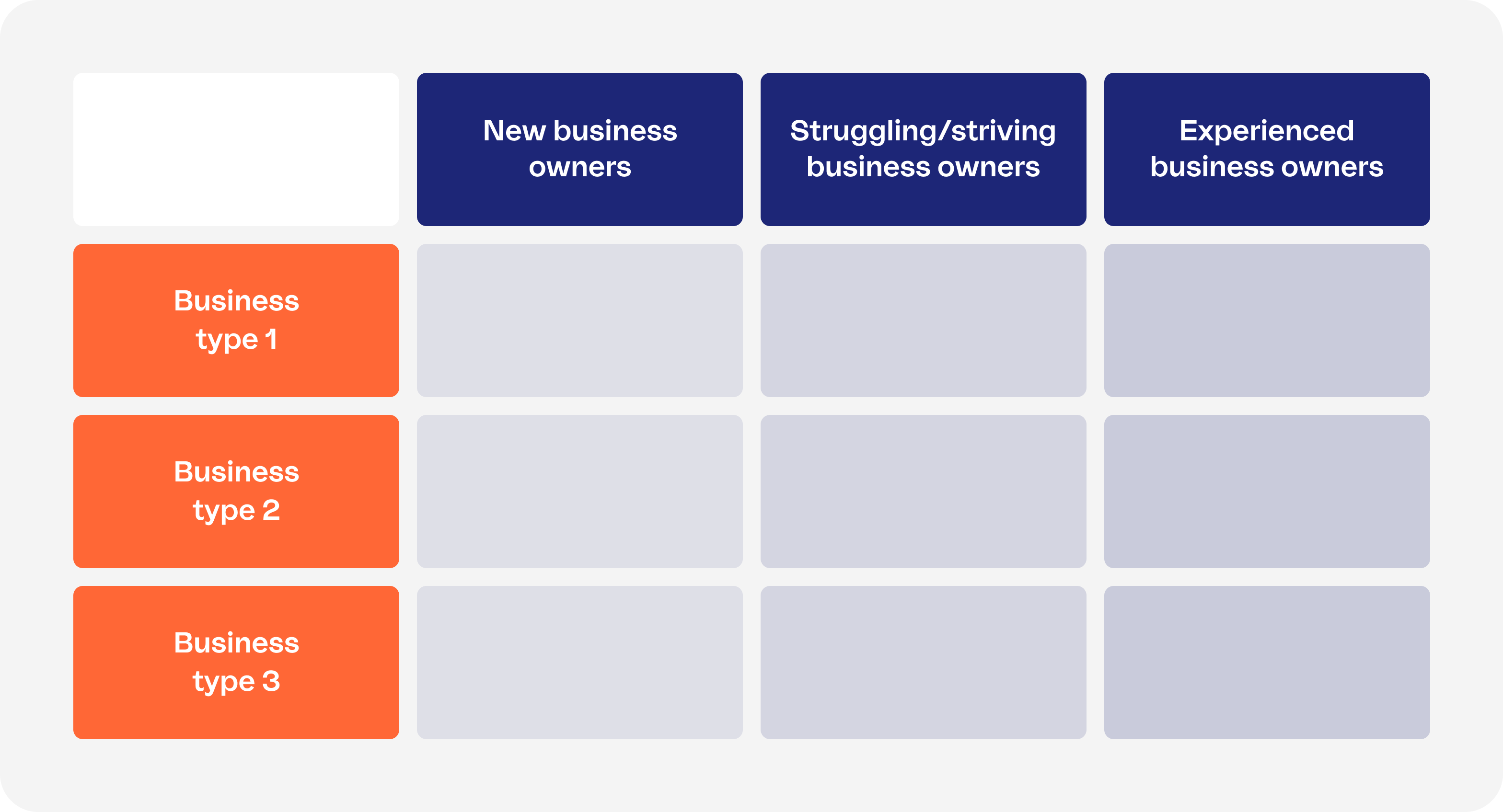
Choose a First Best User (FBU)
Once you’ve got a strong persona model, it’s time to apply it to key decisions on your product. To specify and prioritise well, we need a set of heuristics - concepts and ideas that we are assuming are true (with some evidence) and are using to drive key decisions.
For some organisations, they will create a persona model which describes their entire addressable market, and try to build a product which serves all user groups. This is a mistake for early stage products. A good heuristic for an early stage product is to select a First Best User (FBU) from your persona model, and only focus on that. You may not be appealing to your whole addressable market, but at this stage you don’t need to - you just need to get your foot in the door and build a small community of users who love your product. Using a First Best User heuristic makes it easier for you to arrive at a tightly defined product that can be built quickly and still show traction in the market.
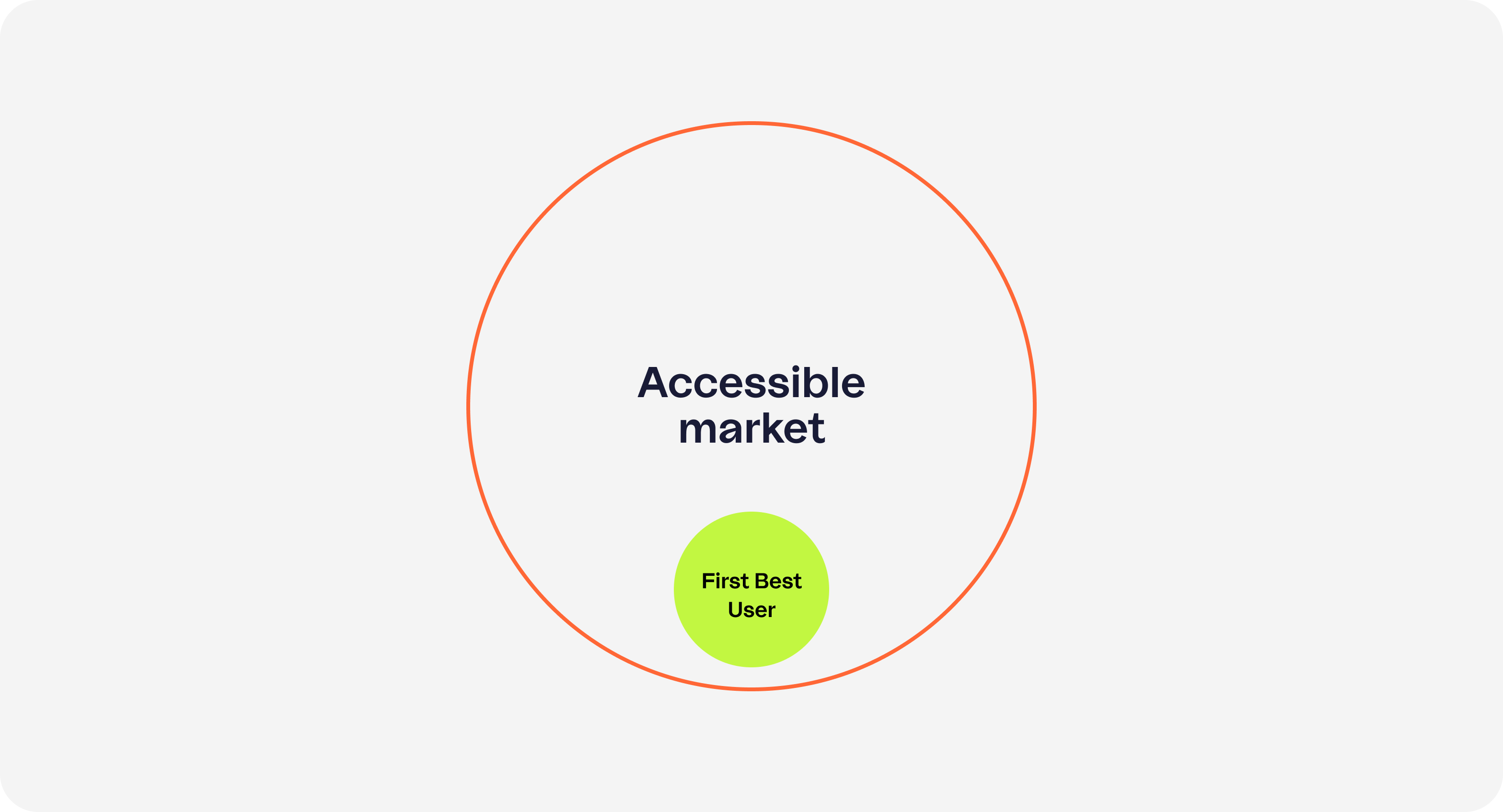
Selecting a First Best User should be a quick and pragmatic decision. The best candidate for a First Best User is likely to be:
- A group you can reach - Do you have good demographic proxies for this group? If you are part of a larger organisation, can you leverage existing channels to reach them?
- A user group you know well - Either because they have been easy to reach for research, or because your team has experience working with them.
- Early adopters - Look at their attitudes and their behaviours - are they the type of person to try a new, early stage product? Are they digitally literate enough? Are they likely to change behaviours easily?
- Looking to solve a problem which is not well served in the market - It doesn’t have to be a big problem, but it shouldn’t be one which is already well solved by a product this user group can afford.
- A group you can build on - You are going to want to expand your product to include other user types in future, so try not to pick a First Best User which is an outlier and very dissimilar to the rest of your addressable market.
In my example from earlier where we were focused on small businesses, we selected a persona which was in the middle of their learning curve as a business owner. They had struggled enough as a business owner to know they had a problem they wanted to solve, but they weren’t so experienced as to have solved the problem with their own processes and techniques. As we refined our persona model, we also focused on one particular type of business that relied heavily on invoices as it was a group we could reach easily with a problem we understood.
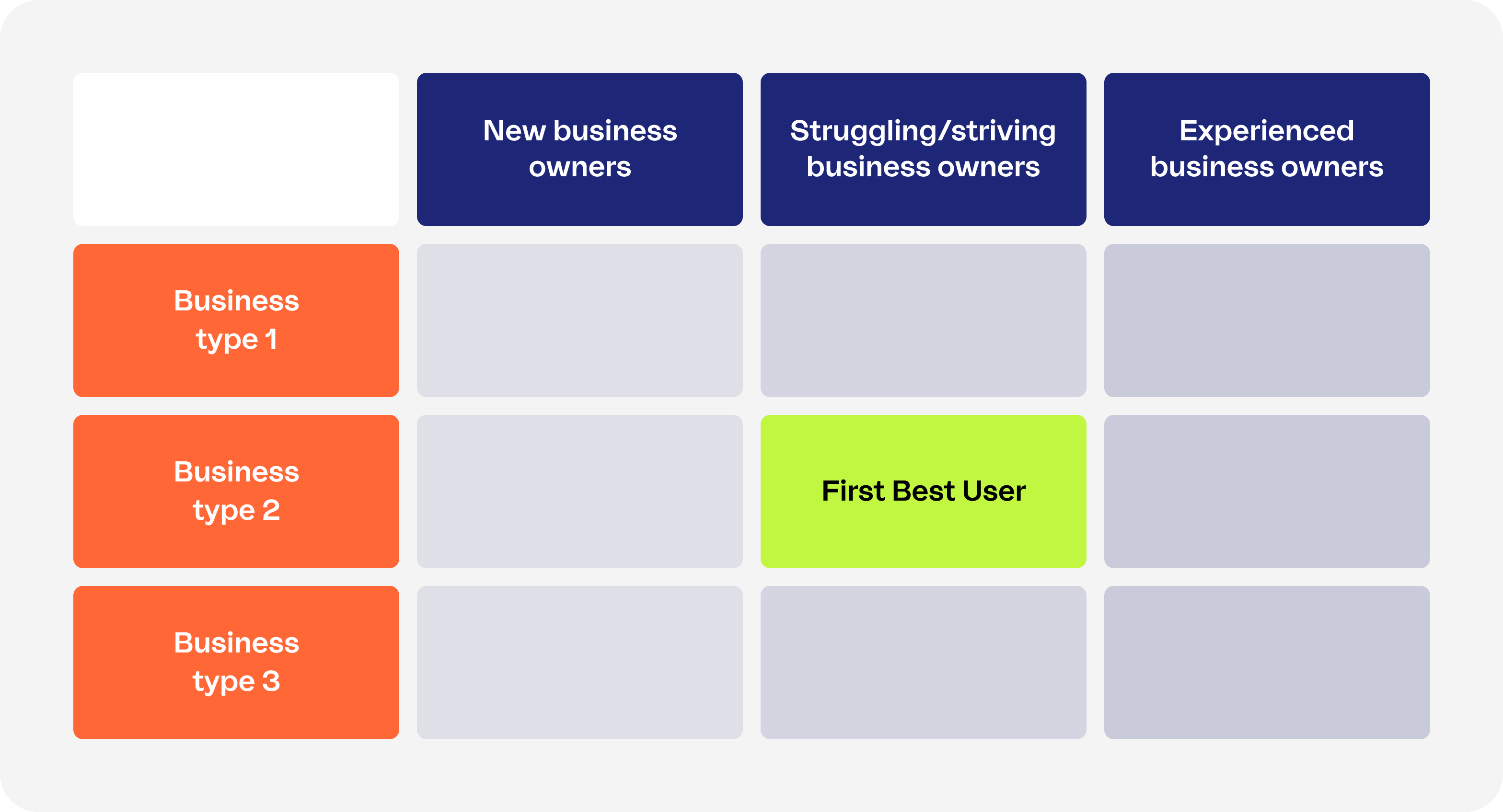
Defining your MVP
Once you have selected your First Best User, you can begin to define what problems you want to solve for them, and what the solution might look like. You want to find problems and needs that would have a high value to the user (they can’t solve them well at the moment with what’s available on the market) but can also be solved with a simple digital product (they are feasible).
It isn’t possible to know with certainty which set of features or value drivers will create traction with your First Best Users, but a good model for thinking about what to include is Kano Analysis, which divides value drivers into three categories:
Basic needs - if users don’t have these value drivers they will be annoyed, but they aren’t valuable enough on their own. If you are designing a car, “four wheels” would be a basic need.
Performance needs - The better you serve a performance need, the more satisfied a customer is. These aren’t binary - you can invest more in a performance need to solve a problem better. If you are designing a car, “fuel efficiency” would be a performance need
Exciters or delighters - These are value drivers which are innovative and new, and will provide the customer with a unique experience. You might call them USPs, but they can also be small moments of delight in your user journey. These are highly satisfying to users, but you need to make sure you are satisfying basic needs in order for them to work. If you are designing a car, a snazzy new piece of technology would be a delighter (I’d suggest something like an auto-parking feature, but I know this will go out of date soon - that's the thing about delighters - they become basic needs over time!)
When creating an MVP, a good guideline is to invest 50% of your effort into basic needs, 40% of your effort into performance needs, and only 10% of time into exciters or delighters. That doesn’t sound like much, but remember that the purpose of an MVP is to get a product into the market and see if you can show engagement. You will continue to iterate on the product - identifying basic needs you haven’t met, improving product performance and adding new exciters and delighters until you can show continued engagement.
Combining form and function
A common mistake when defining an MVP is to focus on function (what the product does) over form (how it does it). This is often because decision makers assume that a long feature list is what is more important to users than the experience of using the product. This is true in some limited cases - certain B2B products are procured in this way, and back-office systems can be built in this way too. However, for most consumer products, a well designed experience is crucial for success. Most consumers aren’t looking for a feature list, they are looking for a digital product that solves a problem well and in an enjoyable, stress free way.
Does this mean our MVPs need to be larger, because they need to focus on form as well as function? Not necessarily. In most cases, a strong MVP can be created by selecting a smaller feature set, and investing in a high quality experience across that feature set.
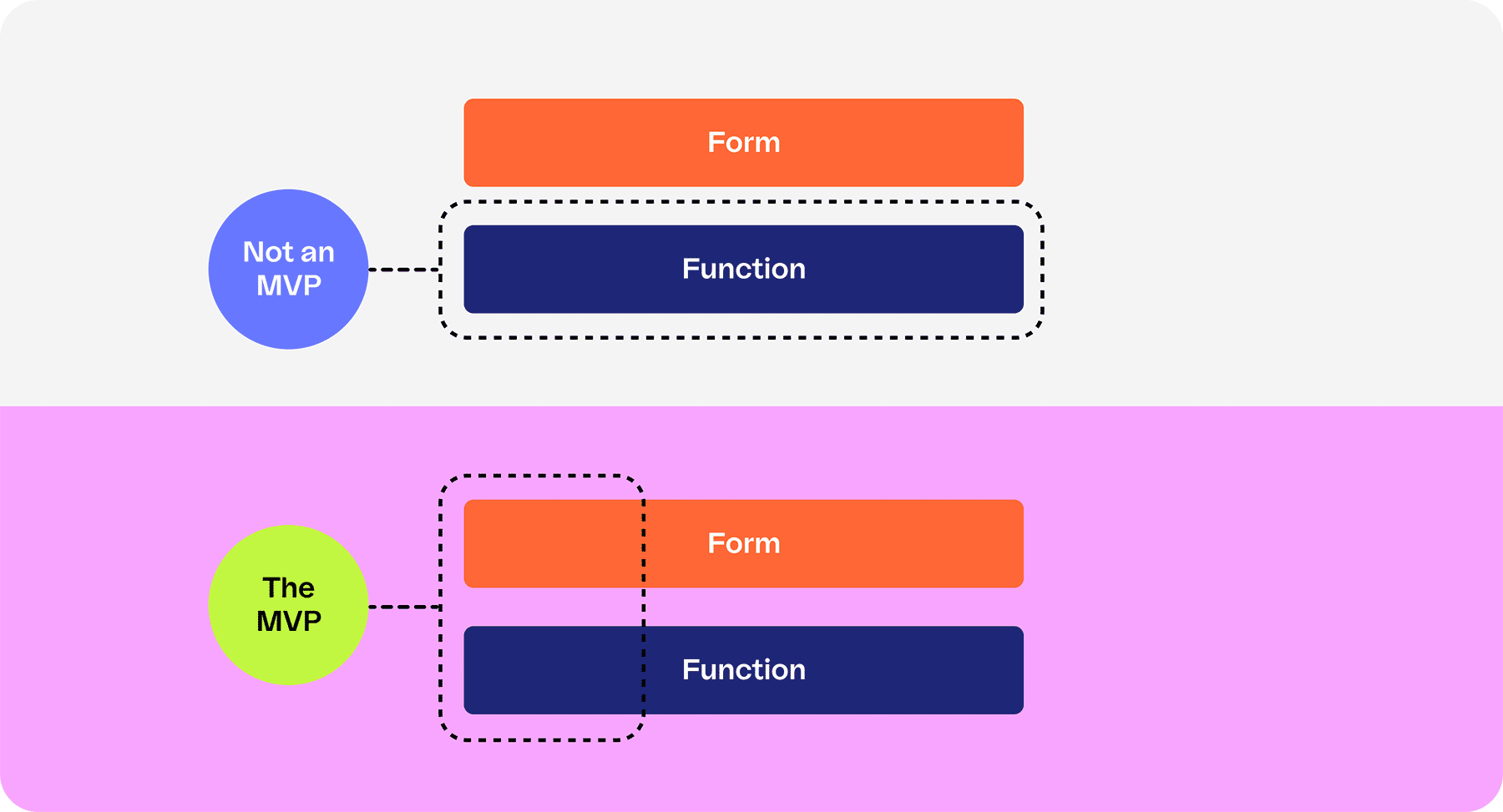
Grow beyond your MVP
Once you have an MVP in the market, you can begin iterating on it. You can add experiences, features and other pieces of value until you reach Product / Market Fit. This means you can show that your users value the product and will keep coming back. This is easier with a First Best User model because you have a clearly defined set of people and problems to solve, but it isn’t enough to make a product scalable.
When you find Product / Market Fit with your First Best user, you have a decision to make about what you prioritise next:
Deepen Value for the First Best User - You may have created enough value for your users to keep coming back, but you might not have created enough value for them to start paying for the product at a price point that works for your business model. In this case, keep adding value drivers which appeal to your First Best Users until they value the product enough to pay. Or you can create value for your business in other ways, such as data and ads.
Scale Up by Adding User Types - If your priority is to reach a large user base fast, you can select your next growth personas to bring into the product. You need to compare your growth personas to your First Best Users. What is the gap in their needs,
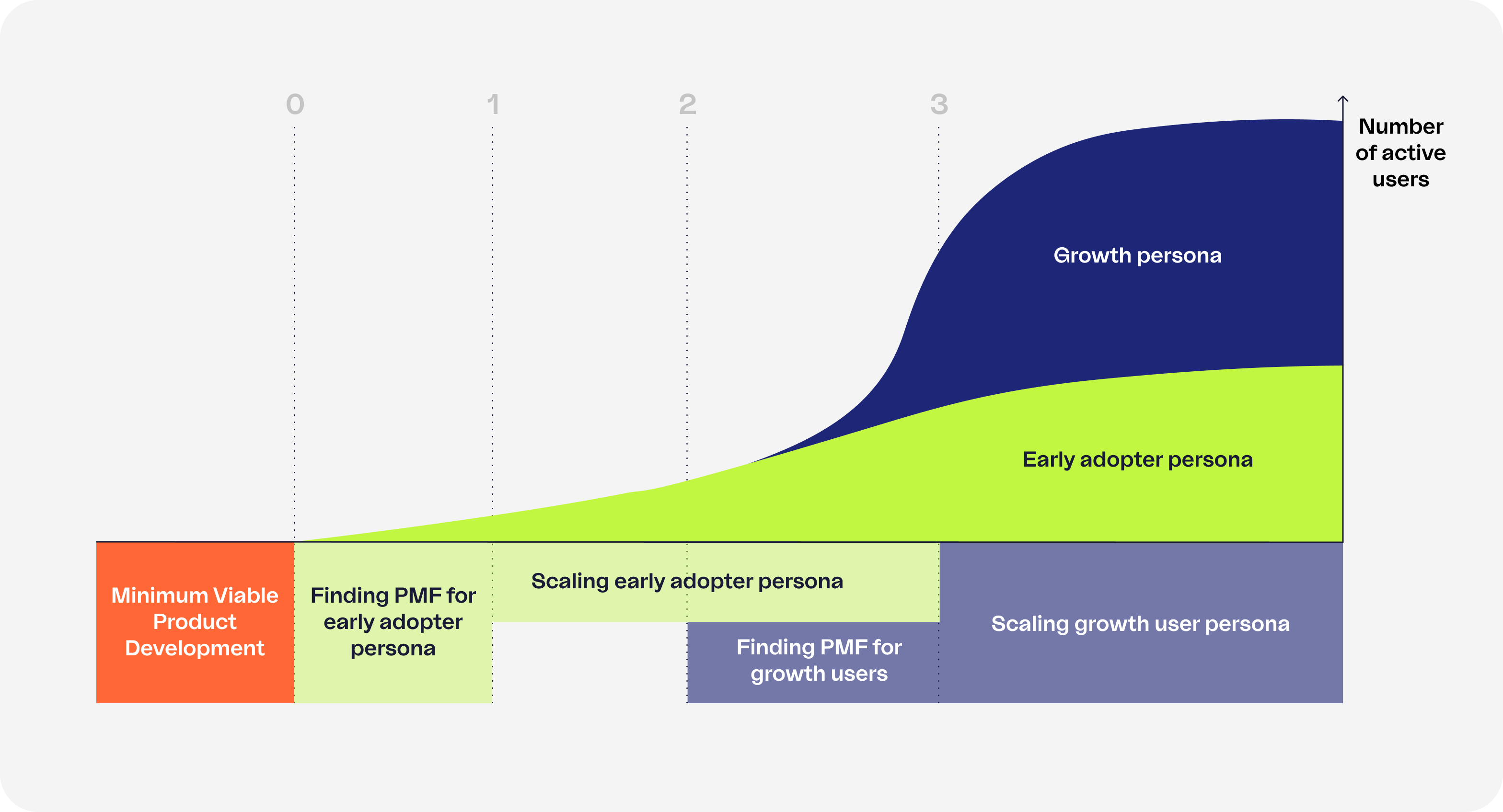
For user types where you have established Product / Market Fit, you can invest in lead generation to grow your user base, and invest in features to grow your revenue. For growth personas, you only need to invest enough in lead generation to reach these users and test product concepts until you can show traction.
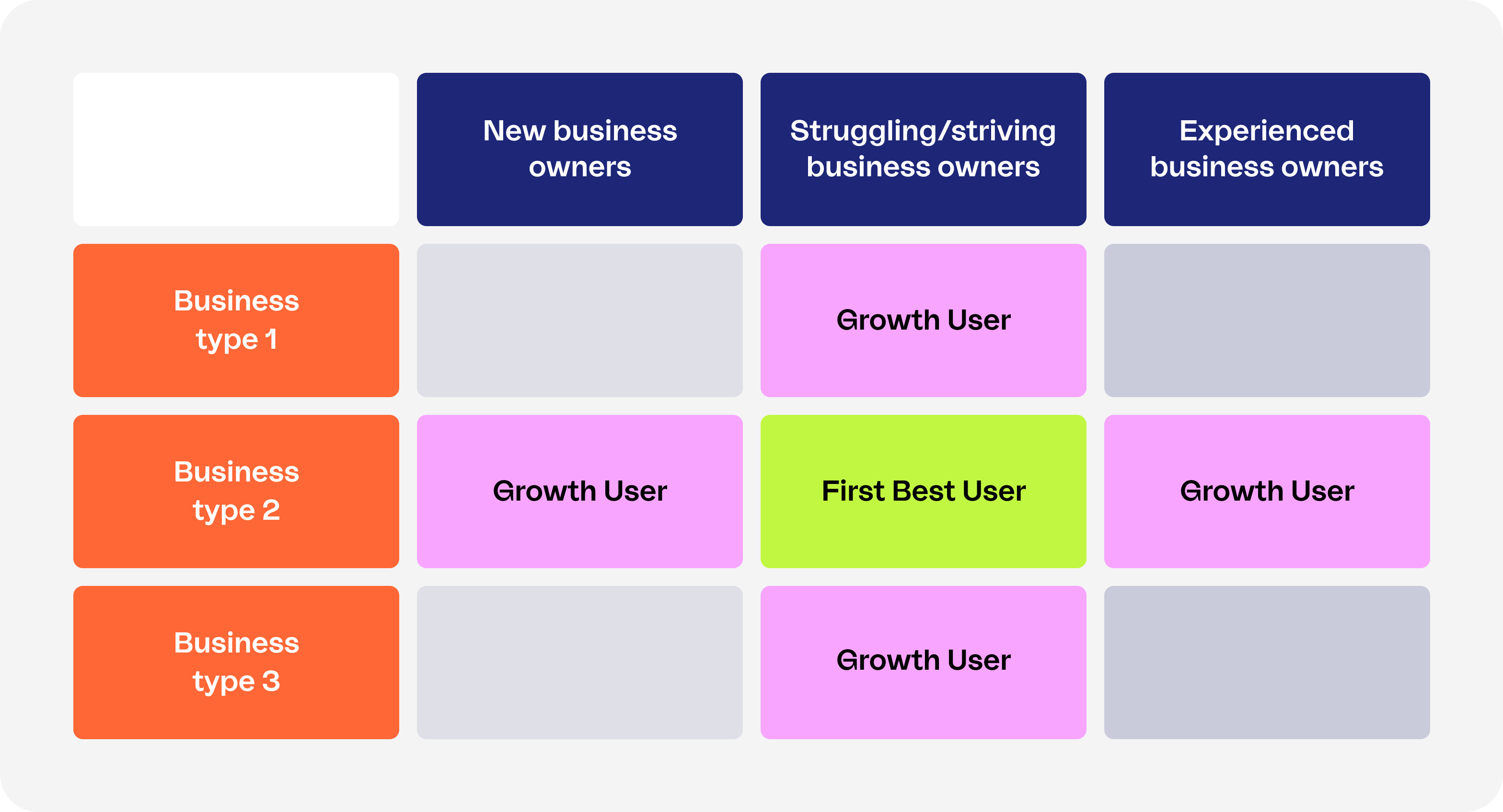
Why go to all this effort to sequence your roadmap if you know your long term aim is to dominate your addressable market? Why not just build features if you know someone wants them? The answer is simple - the best data you can collect to make good product decisions is only obtainable if you are exposed to the market.
Seeing how users interact with your product in real contexts tells you more than expert analysis and abstract research ever could, and you want to get to that as fast as possible. It’ll make your product better, faster, and is the best chance you have of becoming the market leader.
